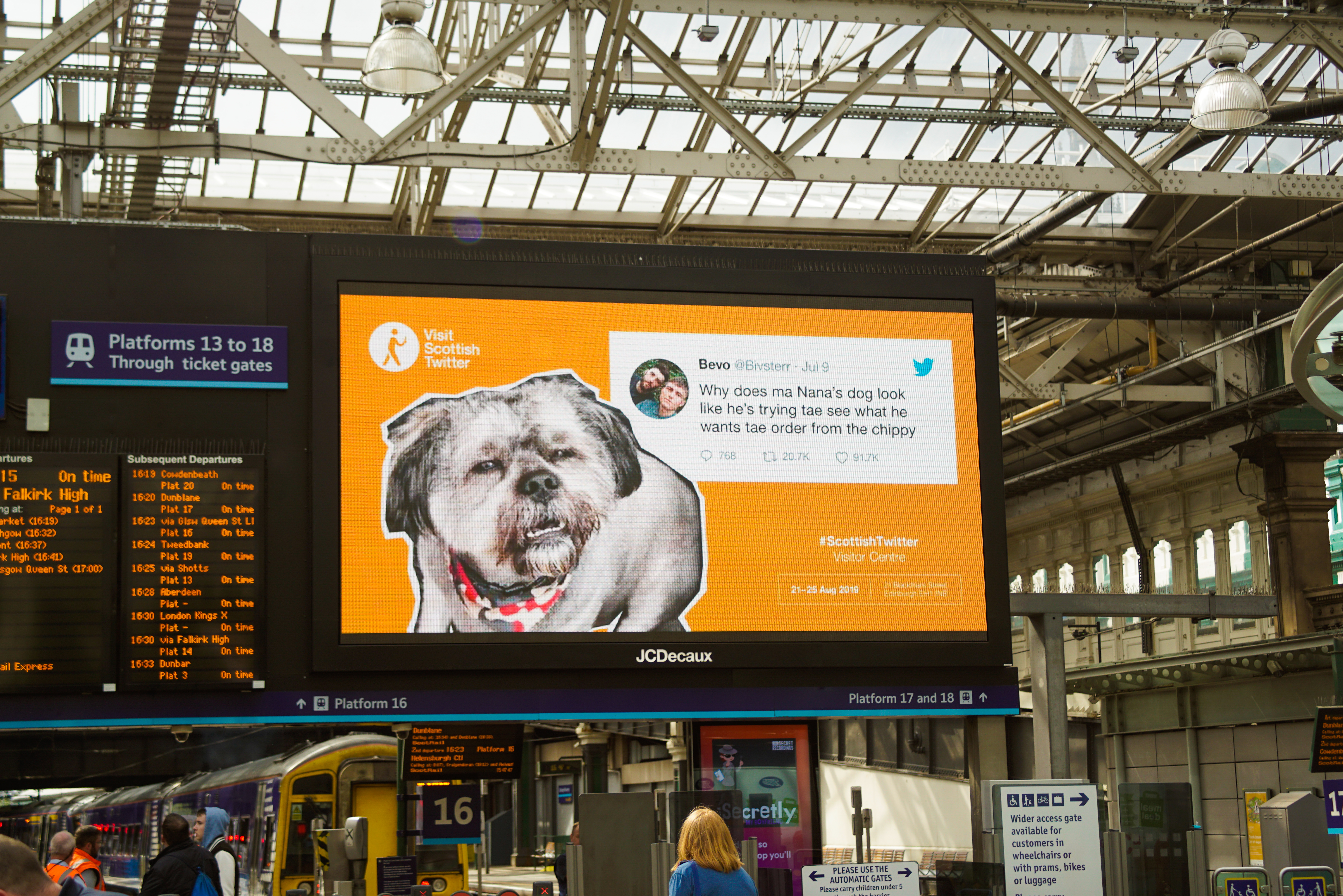With - hopefully - social distancing regulations finally beginning to be lifted, many brands are feeling like they can start thinking about experiential again. We certainly are. It feels like a good time to think about the channel strategically - and, for us, reflect on how experiential forms the heart of an integrated campaign, and what that means for the campaign as a whole.
About that “integration”
“Integrated” is a very satisfying word in marketing and advertising. For clients it can mean bringing together - consolidating - the integration of media and creative, for example. But it can also be expansive; taking an idea that lives in one media type and building on it, bringing it to life elsewhere, seeing how it stretches.
Last year we won the Integrated gong at the Campaign Big Awards, for Visit #ScottishTwitter. Personally I’d always seen the campaign as sort of experiential-plus; a physical installation at the heart, then video and OOH to compliment it. But hearing the judges wax lyrical about it made me realise the benefits of an integrated campaign that’s built out from an idea that - to start with at least - is an experience. The benefits of a campaign strategy that’s fundamentally engaging.
A ripple effect
Experiences, unlike much of paid media, aren’t interruptive. Engagement with an experience is on the audience’s terms. The media buy - the location rental - gets you less far than traditional channels; the production has to do more work. It needs to lead people in; it needs to hold them there, and infuse them with positive memories and good emotional responses. Then send them into the world ready to amplify the message. The price-per-engagement is high; unless visitors are smitten by it to such an extent that they’re willing to talk about it later, then it quickly becomes a very luxury option indeed.
Our goal with experiences, then, is always to reach a much broader audience than could ever visit it. But just dialling up the volume won’t succeed in this. Instead the communication of the message needs to happen in a participatory, inclusive way - a visitor should discover it, rather than be told it - which runs somewhat counter to a classic advertising approach. And that’s why building an integrated campaign out of an experiential idea gets so interesting.
Everything is an experience
The out-of-home for Scottish Twitter is kinda baffling. There’s some museum-type design in there, then a colour scheme and image cut-out that feels like a meme, all of which surrounds a Tweet, which is itself a silly joke. It feels like some jokesters on Twitter have taken over a National Trust campaign which, of course, is exactly the point, because that’s what the experience is all about; not hearing from Twitter the brand, but hearing from #ScottishTwitter the community. That’s worth walking off the street for. And in the out of home, it turned out to be worth taking photos of and even getting local press for.
The video’s authorship - even though it ends on the Twitter bird - was hotly debated on the subreddit that comments on #ScottishTwitter, to the extent that some posters thought it was an ad *for the subreddit*.
In short: do, don’t tell
Most advertising doesn’t communicate messages directly; it communicates through story, imagery, celebrity. Experiential ideas communicate through feeling and act. A promise that feels worth wasting time for, and the act of the idea existing in the real world at all (the “they did what??”) - a doing, not a telling. As you’re thinking about brand experiences again, ponder how this philosophy can move through all your media. (And why not have a chat with us about it?)


